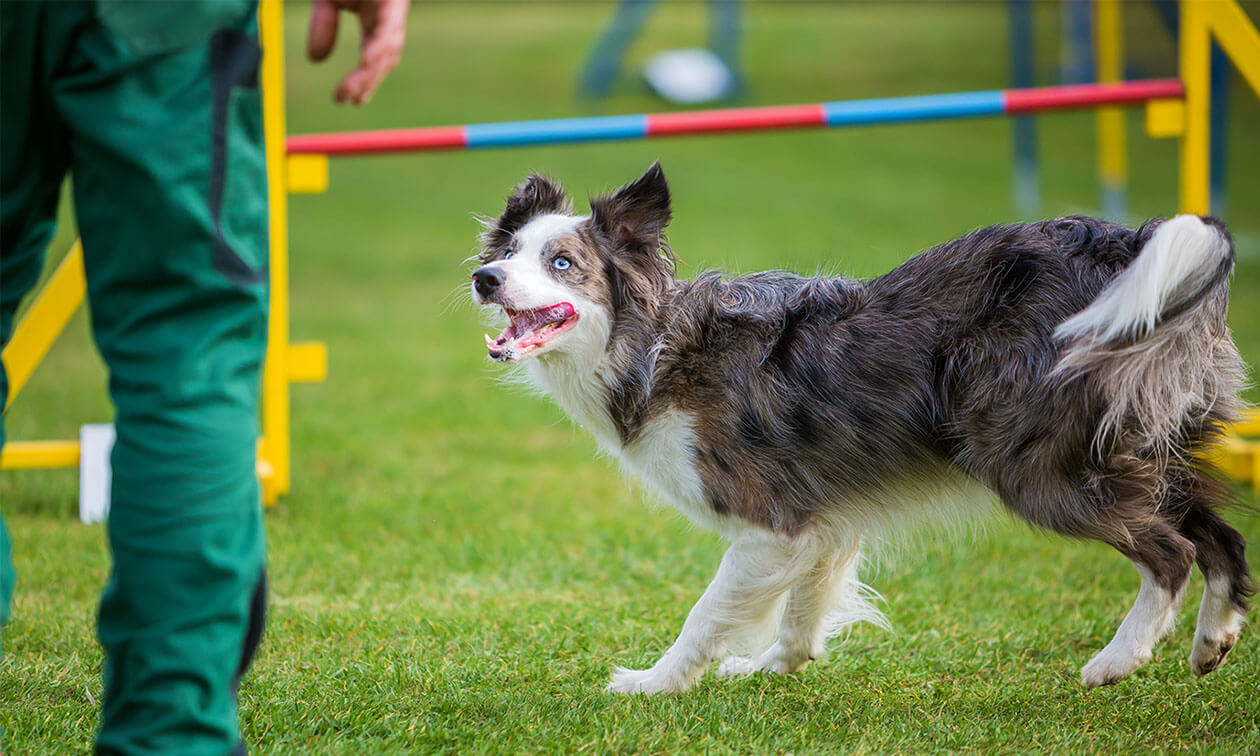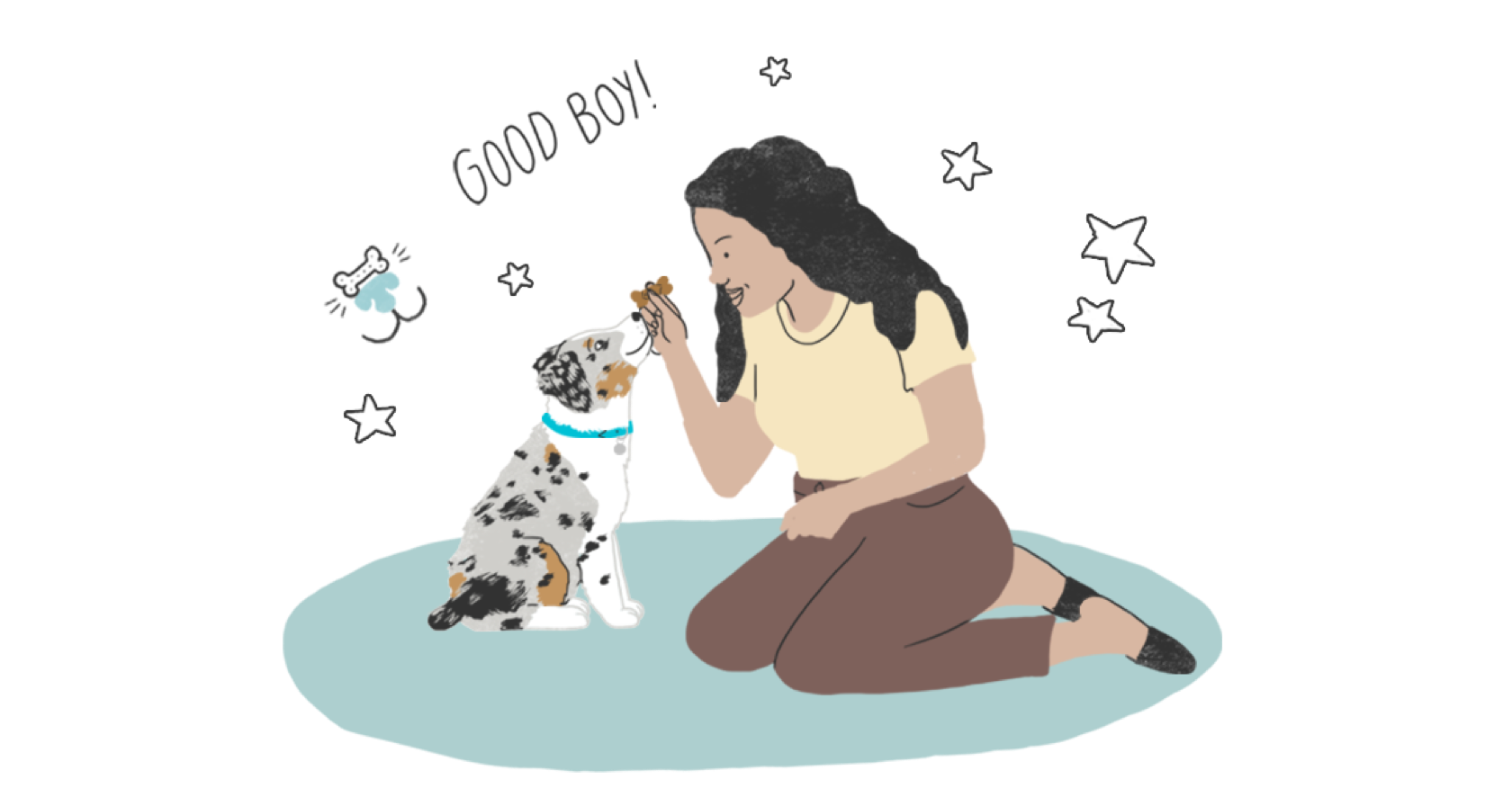Watching a dog speed through an agility course, weaving nimbly through obstacles and flying over jumps, is always impressive. You may be wondering if agility is something you and your dog may enjoy. Whether you want to compete for titles and ribbons or simply have a blast with your dog — while getting a good workout yourself — dog agility is a great sport to try.
Agility is a popular dog sport where a dog must run through an obstacle course, guided by their handler (you), to do each obstacle in order. Agility obstacles include tunnels, jumps, A-frames, seesaws, elevated dog walks, and more. Dogs are scored on how fast they can finish all obstacles, with points deducted if they miss an obstacle or knock down a jump bar.
Benefits of Agility Training for Dogs
Training your dog in agility provides many benefits:
- Physical exercise. If you have a high-energy dog, agility is a very physical dog sport that burns lots of calories. Agility can also be a good way to help a dog lose weight and stay in shape. Dog agility requires not only strength and endurance but flexibility and body awareness. Not to mention it’s also a great workout for you, as you must keep up with your dog as you run the course to guide them between obstacles.
- Mental exercise. Dog agility is not just about being physically able to get through the obstacles — your dog must think about what they’re doing and listen to your directions on the course too. Practicing agility is a way to give your dog a job and put their brain to work.
- Strengthens your relationship. Practicing agility means that you and your dog learn how to better communicate and trust each other as you go through each obstacle. Plus, it’s fun, and when your dog has fun with you, your bond is stronger.
- Builds your dog’s confidence. Participating in agility classes or competitions helps your dog build confidence in trying new things. For cautious or fearful dogs, starting with easy obstacles and being successful (all while having fun) leads to trying out different obstacles or more difficult agility skills. Because your dog is often training alone in the agility ring, it’s also an option to help reactive dogs focus on different environments where people and other dogs are nearby but not too close.
Is Agility Training Right for Your Dog?
Many dogs participate in and enjoy agility training, no matter their size or breed. While certain breeds like Border Collies or Australian Shepherds are often considered superstars in the agility world, obstacles can be adjusted to any size for dogs like Chihuahuas or Papillons. Even Basset Hounds, not known for their nimbleness, can have a grand old time lumbering through the course. Mixed breeds also participate in dog agility. The most important thing is that the dog is having a good time and enjoys doing agility with you.
Because dog agility is physically intense, young dogs who are still growing and older dogs need adjustments in their training. Start with an agility foundations class that doesn’t include jumps over high bars or from heights. Once their growth plates are closed, you can start introducing more difficult levels of obstacles. Ask your veterinarian what they recommend for the best age to start jumping your dog.
If your dog is older or has mobility issues, you’ll want to ensure that they aren’t overdoing it. Adjust jump heights, A-frame angles, or weave poles to their abilities. If you have a long-backed breed, such as a Corgi or Dachshund, you’ll want to ensure you aren’t adding extra stress to their spine. Again, relying on your veterinarian for appropriate level and type of exercise for your dog is best.
Try a Dog Agility Class
Before attending agility classes, it is a good idea for your dog to take basic obedience classes — this will prepare them to try agility. To see if your dog would enjoy agility, sign up for a local agility training class or set up a few easy agility obstacles in your yard to try out. Does your dog want to explore the obstacles, or do they shut down when on the course? Are they anxious around all the different equipment, people, and other dogs? Are they excited to follow your lead with these new things? Does the fast pace of the sport make them calmer after class, or do they have a hard time calming down? These things can help determine whether agility training is right for your dog.
Attending a class also allows you to start learning about each obstacle and the nuances within agility training, such as contact obstacle rules, how your body language affects obstacle sequencing, and more. You’ll also be able to determine whether it’s something you enjoy and want to do more. If there aren’t agility classes near you, there are many options online that you can sign up for and follow along at home.
Tips for Starting Your Dog Out with Agility Training
- Check with your vet. A dog should be physically healthy before starting agility training, fully vaccinated and on flea, tick and heartworm preventative. They will be around other dogs and people so it is important they are protected. If you have an adult dog, be sure to have a thorough physical exam and lab work before beginning any training to ensure they’re healthy enough to participate. Also, discuss with your veterinarian ways to help prevent injuries (i.e., warm-ups and cool-downs), nutritional needs, and maintaining hydration. Start with the basics. Some basic training skills, such as paying attention to you, sitting, and staying, will benefit your agility training. Sign up for basic training classes as early as possible with your dog to start building these skills and create a positive line of communication between you and your dog.
- Above all, have fun. While ribbons and titles are great, they aren’t the point of agility. Your dog doesn’t care whether they got a pretty ribbon, and they can’t read the scoreboard. All that matters to them is that they had a good time and that you’re happy. If you find agility training to be too stressful for you or your dog, take a break or make the course easier. You’ll find that your connection with your dog while learning new things like agility is the best reward!
ZPC-02521



